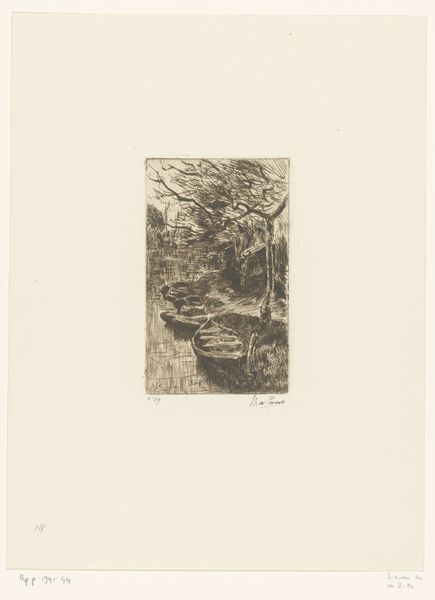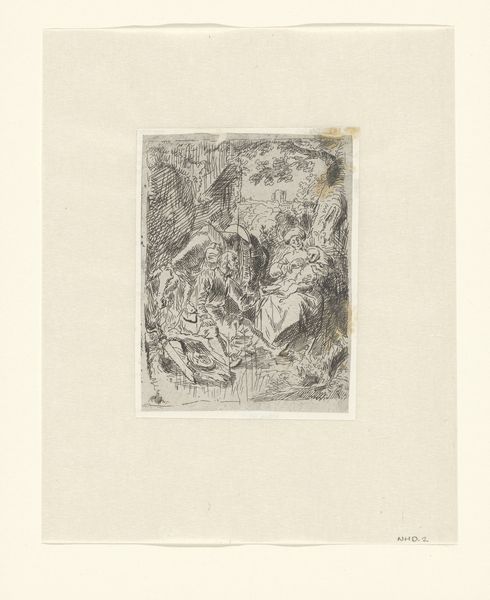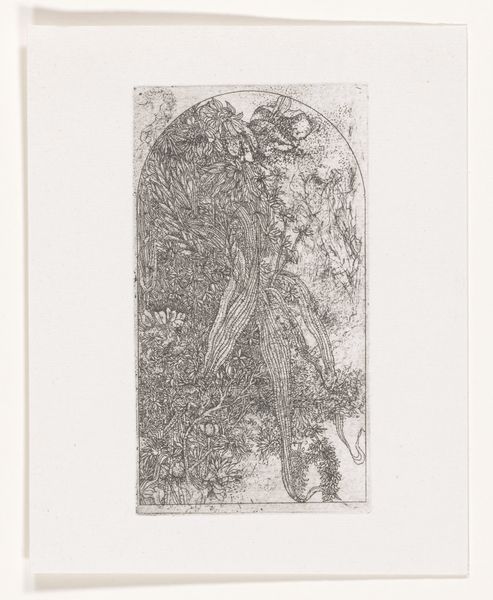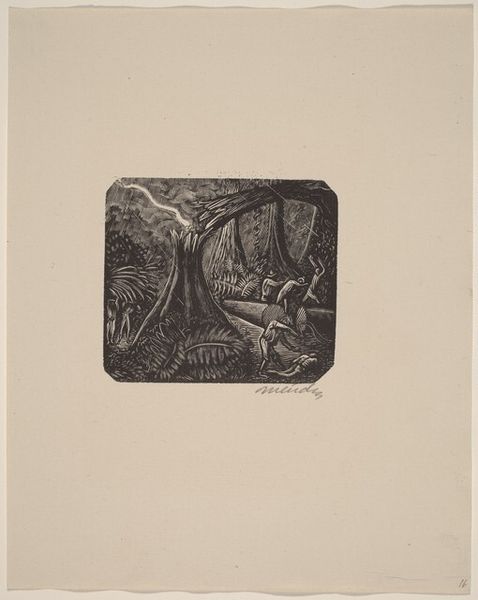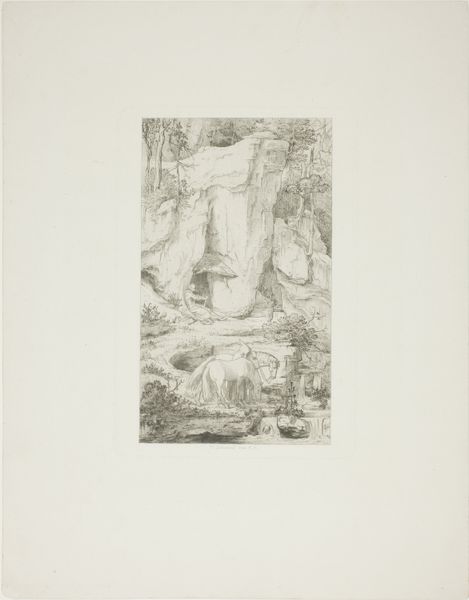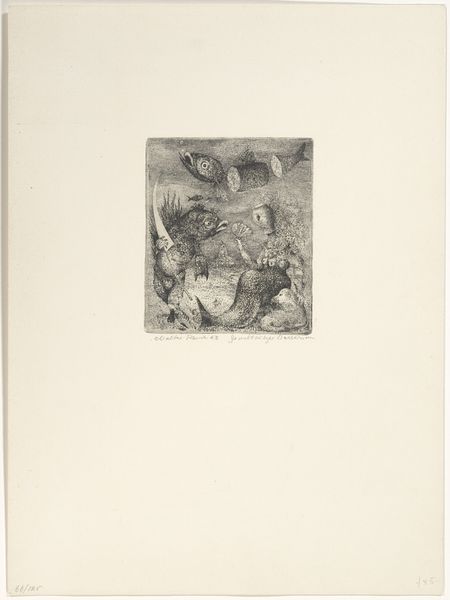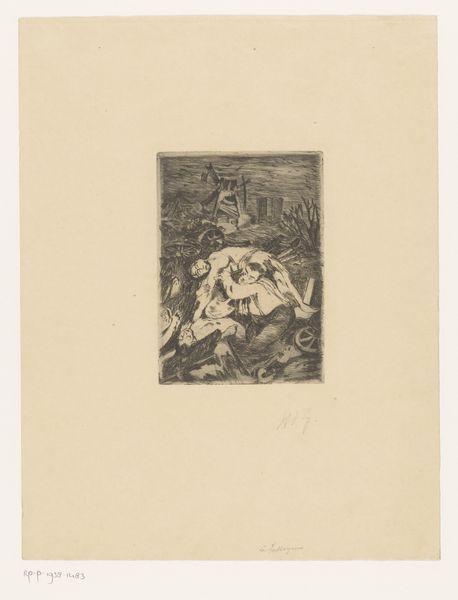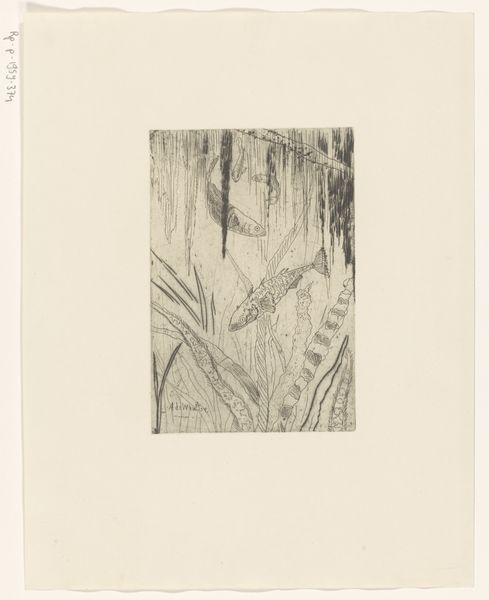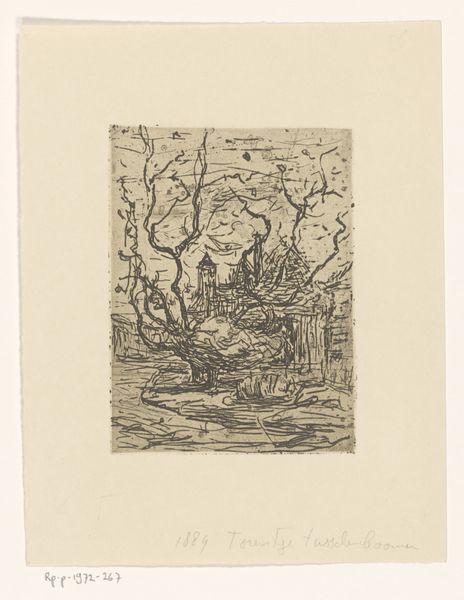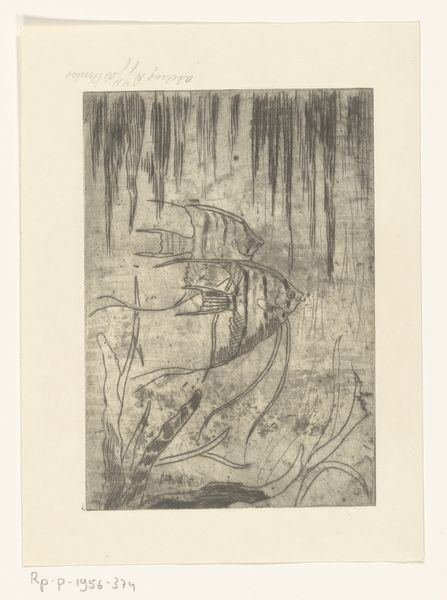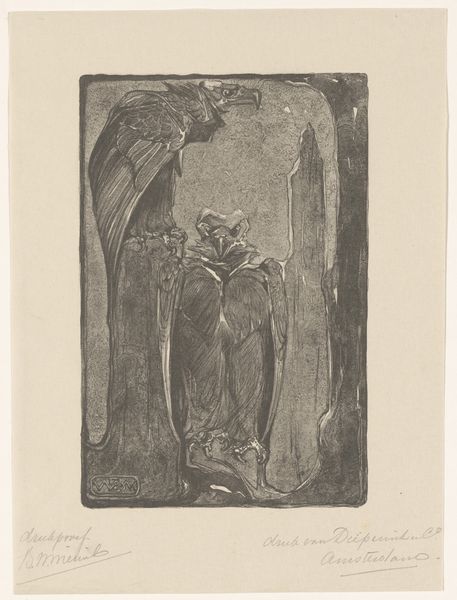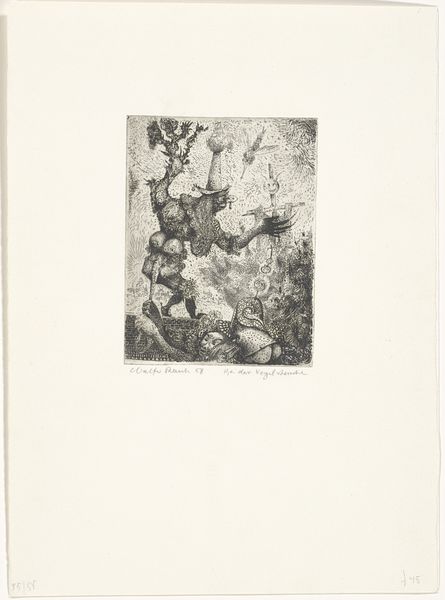
Dimensions: height 210 mm, width 161 mm
Copyright: Rijks Museum: Open Domain
Curator: This etching, "Kleine waterval in een dicht bos," or "Small Waterfall in a Dense Forest," comes to us from Edgar Alfred Baes. It was produced sometime between 1847 and 1909, a work from the Romantic period. Editor: It strikes me immediately as something deeply enclosed, almost claustrophobic. The dark etching against the bright paper gives this little scene so much contrast and texture. I want to know more about that. Curator: Baes was a master etcher. Consider the lines; the density of them gives us a real sense of the density of the forest itself. The Romantic artists were deeply concerned with nature and the sublime, presenting it here as a kind of spiritual home. Editor: So, to get this effect, he'd need some copper, some acid… and then a press to transfer the image from the plate to paper. Thinking about that process, that careful application of acid resisting ink, shows you the layers that constitute this little piece of art. Curator: Absolutely, it’s that sense of discovery and immersion, both for the artist and the viewer. But I wonder about the emotional pull here—forests often served as symbols of the unconscious, those places of both enchantment and threat. Do you sense that ambiguity? Editor: Absolutely. There’s that barely suggested bridge, almost a hint of habitation, but the real story is in the tension between that man-made addition and the overwhelming nature surrounding it. And the question then becomes: who had the skill and wherewithal to make the tools for creating something as skilled and precise as this etching? What kind of artisanal labour underpinned it? Curator: Good point, though don't forget the allure of escape and mystery was central to this style. That barely suggested path deeper into the woods is an invitation to that kind of personal, spiritual journey. Editor: Indeed. What began for me as a material consideration leads to understanding how people historically interacted with, and perhaps still desire to interact with nature. Curator: And, looking at Baes’s atmospheric technique through those lines and shadow, what emerges for me is the idea of inner exploration reflected by the majesty of the natural world. Editor: For me it highlights both the possibilities and the material restraints facing the nineteenth century artisan, that this Romantic dream emerges from the labor and expertise of industrial production.
Comments
No comments
Be the first to comment and join the conversation on the ultimate creative platform.
